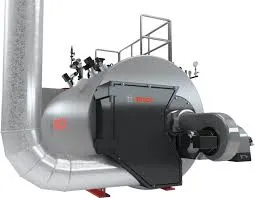china steam boiler for textile mill
The Role of Steam Boilers in Textile Mills in China
The textile industry is one of the most significant sectors in China's economy, contributing substantially to its GDP and providing millions of jobs. With the ever-increasing demand for textiles both domestically and globally, the efficiency and reliability of production processes are more essential than ever. A crucial element in this production is the steam boiler. This article explores the role of steam boilers in textile mills, specifically within the context of China’s burgeoning textile sector.
The Importance of Steam Boilers
Steam boilers are vital in various industrial processes, and the textile industry is no exception. They provide the necessary heat and steam for numerous operations, including dyeing, finishing, and fabric production. In textile mills, steam plays a critical role in ensuring consistent temperatures, which is crucial for dyeing processes. The right temperature allows for uniform color application across fabrics, minimizing waste and ensuring high-quality output.
In addition to dyeing, steam is also crucial for finishing processes. Treatments like sanforizing, which shrink fabrics to size, and steam ironing, which smooths out wrinkles, all rely on steam production. The ability of a steam boiler to provide reliable and high-quality steam directly impacts the final product's efficiency and quality.
Advancements in Technology
In recent years, there has been a significant shift in boiler technology. Traditional coal-fired boilers have begun to be replaced with more efficient and eco-friendly options, such as electric and gas-fired boilers. This change has come in response to stringent environmental regulations, as the Chinese government strives to reduce air pollution and emissions from industrial operations.
Modern steam boilers are equipped with advanced control systems, which improve the efficiency of steam generation. These systems allow for better monitoring of steam pressure and temperature, ensuring optimal operating conditions. High-efficiency boilers can significantly reduce fuel consumption, which not only leads to cost savings for textile mills but also contributes to a reduced carbon footprint.
china steam boiler for textile mill

Challenges Faced by the Industry
Despite the technological advancements in steam boiler systems, textile mills in China still face several challenges. One of the significant issues is the high operational cost associated with energy consumption. Maintaining efficiency while managing costs is a balancing act that many manufacturers are trying to navigate. The fluctuating prices of fuel also add to the uncertainty and planning difficulties for textile producers.
Additionally, the changeover from traditional to advanced boiler systems can necessitate significant initial investments. While the long-term savings and environmental benefits may outweigh these costs, many smaller textile mills struggle with the financial burden of upgrading their equipment.
The Future of Steam Boilers in Textile Mills
Looking forward, the role of steam boilers in the textile industry will continue to evolve. As the market increasingly focuses on sustainability, there will be a push towards adopting greener technologies. Biomass boilers and systems that incorporate renewable energy sources could gain traction in the coming years as mills seek to comply with environmental regulations and consumer demand for sustainable practices.
Research and development in this field will focus on enhancing the energy efficiency of steam boilers while minimizing emissions. Additionally, integrating digital technologies such as IoT (Internet of Things) could lead to unparalleled levels of monitoring and control, further optimizing operations in textile mills.
Conclusion
Steam boilers are an indispensable part of textile production in China. Their ability to provide the necessary heat and steam for various industrial processes plays a significant role in ensuring consistency and quality in textile manufacturing. While challenges remain in terms of costs and transitioning to greener technologies, the future of steam boilers in the textile industry looks promising. As technological advancements continue to emerge, manufacturers will have the opportunity to enhance production efficiency, reduce environmental impact, and meet the ever-changing demands of the global textile market.
-
Fire Tube Boiler Exporter High-Efficiency & Affordable PricingNewsJun.01,2025
-
Incinerator Waste Heat Boilers High-Efficiency Supplier & Factory SolutionsNewsJun.01,2025
-
Efficient Hot Water Boilers for Home Reliable Exporter & PricingNewsJun.01,2025
-
Steam Boiler for Plywood Industry Efficient, Durable Supplier SolutionsNewsMay.31,2025
-
Steam Boilers for Garment & Leather Factories Boiler FactoryNewsMay.31,2025
-
Residential Steam Boilers Energy-Efficient & Durable Home HeatingNewsMay.31,2025

